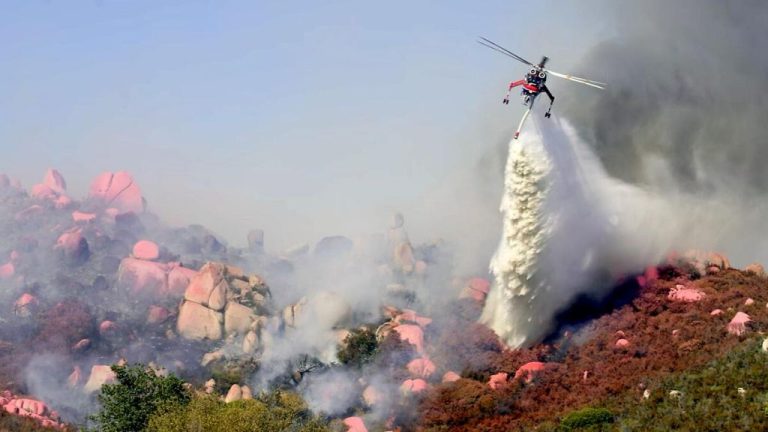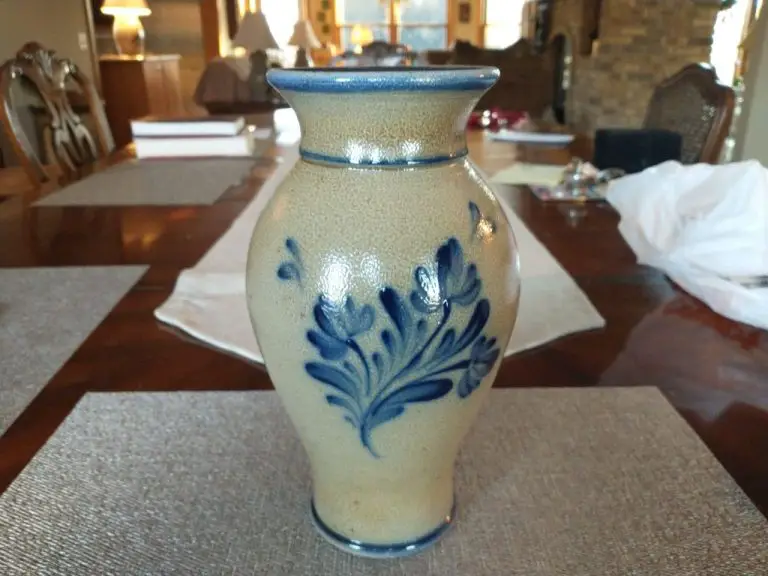What Is The White Stuff On Clay Pots?
What is Efflorescence?
The white chalky substance that appears on clay pots and other ceramics is known as efflorescence, sometimes also called bloom or scum. Efflorescence refers to the salt deposits left behind as moisture evaporates from the clay. It typically appears as a fuzzy white haze or powdery film on the surface of pottery.
While not inherently harmful, efflorescence can be unsightly and frustrating for ceramic artists and potters. Luckily there are ways to remove efflorescence and prevent it from recurring. Understanding what causes this salty bloom and how it forms on clay is the first step towards controlling it.
What Causes Efflorescence
Efflorescence is caused by water soluble salts present in the clay used to make terra cotta pots and other clay products. All natural clay contains small amounts of salts. These salts are usually sodium, potassium, calcium, iron, and magnesium sulfates, chlorides, and carbonates.
When the clay is formed into pottery and fired in a kiln, the high temperatures cause the salts to become insoluble, locking them into the clay. However, when the finished pottery is exposed to water, such as rain or being watered from the inside when used as a plant pot, the salts dissolve and are carried to the surface of the pottery through capillary action.
As the water evaporates, these dissolved salts are left behind on the exterior surfaces of the pottery. The salts then recrystallize, forming the white, powdery deposits known as efflorescence.
Types of Soluble Salts
The white deposits that form on clay surfaces are caused by soluble salts moving through the clay and being deposited on the surface as water evaporates. The main types of soluble salts that contribute to efflorescence include:
- Calcium carbonate: This is one of the most common sources of efflorescence. Calcium carbonate can come from the clay body itself, from hard water used during manufacturing, or from mortars used during installation.
- Sodium carbonate: Also known as soda ash, sodium carbonate is sometimes intentionally added as a flux to reduce firing temperatures. Excess amounts can lead to efflorescence.
- Magnesium carbonate: Like calcium, magnesium is often naturally present in clay and can cause efflorescence when mobilized.
- Potassium salts: Water-soluble potassium compounds may also contribute to efflorescent salts.
- Sodium chloride: Salt spray and ocean air can be sources of sodium chloride deposits on surfaces.
Knowing the source of the salts can help when choosing methods to prevent or remove efflorescence.
Is Efflorescence Harmful?
Efflorescence is generally considered harmless, and more of an aesthetic issue rather than a structural one. The white salty deposits do not damage or weaken the clay pot itself. Efflorescence also does not harm plants or impact their health. The soluble salts that form efflorescence are already present within the clay before pots are fired. Their emergence on the surface does not make the pots themselves more porous or permeable.
Structurally, efflorescence has no effect on the integrity or longevity of ceramic pots. The salts crystallize only on the very surface while the clay underneath remains intact and impermeable to water. Efflorescence may look unsightly, but it does not affect the functional performance of the pots.
For plants, efflorescence is chemically inert and non-toxic. The salts have no detrimental effect on plant roots or leaves. However, salts can build up over time and damage plants if left to accumulate in the soil. But periodic leaching of soils will prevent excessive salt accumulation. Overall, efflorescence on pots does not translate into harmful salinity levels for plants.
Removing Efflorescence
If efflorescence has already built up on your clay pots, there are a few methods you can try to remove it.
The most straightforward approach is to scrub the affected areas with warm water and a stiff brush. The mechanical action of scrubbing helps break up the crystalline salt deposits. You may need to scrub vigorously to get all of the efflorescence off.
For more stubborn deposits, you can try soaking the items in either vinegar or lemon juice. The mild acid in the vinegar or lemon juice helps to dissolve and loosen the soluble salts so they can be rinsed away. Dilute the vinegar or lemon juice with an equal amount of water first. Then soak the pottery for 30 minutes to an hour before scrubbing and rinsing clean.
Repeated applications and scrubbing may be necessary for excessively built up efflorescence. But these methods should allow you to remove the white salty deposits from your clay pots and restore their appearance.
Preventing Future Buildup
To prevent efflorescence from occurring in the future, there are a few steps you can take when using clay pots outdoors:
First, consider sealing the pot before placing it outside. Sealing products like varnish, polyurethane, or wax can create a protective barrier against moisture on the surface of the pot. Choose a sealant specifically formulated for porous materials like clay. Apply multiple thin coats of sealant per the manufacturer’s instructions to thoroughly seal the pot.
Second, provide weather protection for your pots if possible. Keeping them under an overhang, covered porch, or awning will limit their exposure to rain, dew, and sprinklers. You can also move pots to a sheltered area during rainy seasons or before long periods of wet weather if they cannot stay covered year-round.
Taking these preventative steps before displaying clay pots outdoors can help minimize efflorescence.
Choosing Low Efflorescence Clays
Some clay types and firing methods produce less efflorescence than others. Clays with higher temperatures and more complete vitrification like stoneware tend to have less soluble salts remaining compared to low fired earthenware. Using a commercially prepared low-efflorescence clay body is one option for reducing bloom.
Manufacturers produce special clay blends marketed as “zero efflorescence” or “bloom-free” clays. These typically start with a very refined, highly plastic clay that is low in impurities. The clays are fired to cone 6 temperatures or higher for maximum vitrification. Some bloom-free bodies also contain additives like barium carbonate, which improves vitrification and makes the bisque and glaze surfaces less absorbent.
When selecting a clay specifically for low efflorescence, choose a commercially prepared stoneware or porcelain blend marketed as bloom-free or zero efflorescence. While not completely immune to efflorescence, these specialty clay bodies greatly reduce the potential for soluble salts to reach the surface.
Using Efflorescence to Create Effects
While efflorescence is often seen as an unwanted byproduct of clay firing, some potters have learned to intentionally create efflorescence patterns for aesthetic purposes. By carefully controlling the firing process and using specific clay materials, potters can cause beautiful frosted or aged effects from efflorescence.
The key to intentionally creating efflorescence is to under-fire the clay at a low temperature while introducing compounds that will produce carbonate or sulfate salts. Barium and calcium carbonates are commonly used for this technique. As the salts crystallize on the surface during drying, they form the white, crystalline efflorescence effects.
With the right clay materials and firing approach, potters can create delicate frosted or crackled textures from the efflorescence. It can give surfaces an aged, weathered appearance. Intricate efflorescence patterns can also mimic ice crystals, mineral deposits, or other natural designs. Rather than being seen as a flaw, efflorescence transforms into an artistic asset.
Some potters also selectively remove some of the efflorescence after firing to create striking two-toned finishes. The remaining crystals form bold white highlights on the bare clay surface. With creative control over the firing and finishing process, potters can generate one-of-a-kind efflorescence patterns and textures for artistic expression.
Efflorescence on Bricks and Concrete
Efflorescence is not just limited to terracotta and clay pots. The same whitish coating can also form on masonry materials like brick and concrete through a similar process. However, the chemistry involved is slightly different.
On brick and concrete, efflorescence is usually caused by lime leaching out. Portland cement contains lime, which is water soluble. As moisture passes through the brick or concrete, it can dissolve the lime, carrying it to the surface. When the water evaporates, it leaves behind a white deposit of lime.
Efflorescence on masonry is often seen on new construction as excess moisture evaporates from the walls. It may also occur later on if water penetrates through cracks or faulty seals. Like with clay, removing the soluble salts only provides temporary relief. Preventing water intrusion is key to stopping efflorescence on masonry.
Conclusion
Efflorescence is a crystalline deposit that can appear as a white, powdery substance on the surfaces of clay, bricks, concrete and other masonry materials. It is caused by water soluble salts in the material that migrate to the surface where the water evaporates and leaves the salts behind.
There are several types of soluble salts that can cause efflorescence, with calcium carbonate being the most common. While generally harmless, efflorescence can be unsightly and damaging if allowed to build up over time.
Gentle cleaning with water, vinegar or commercial efflorescence removers can eliminate existing deposits. To prevent future efflorescence, it’s important to cure new masonry slowly, provide adequate drainage and ventilation, and seal surfaces if possible.
When choosing clay pots, select ones made from low efflorescence clays or commercial low/no efflorescence bodies that have been optimized to reduce soluble salts. With proper care and maintenance, efflorescence on pots can be minimized for a long-lasting quality finish.


